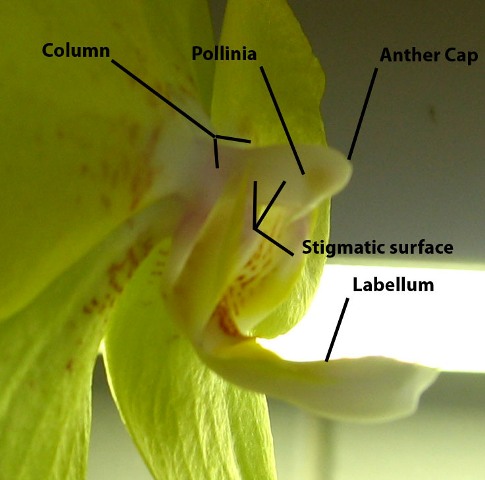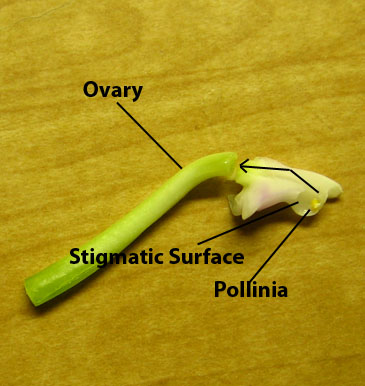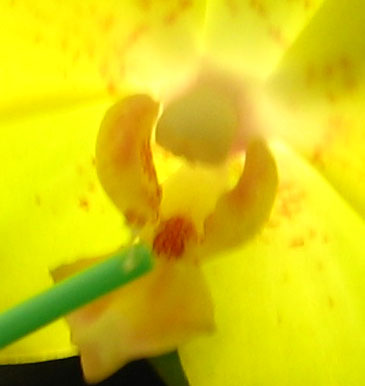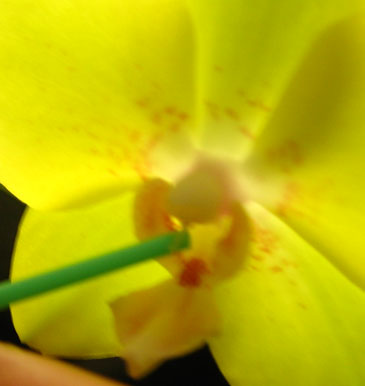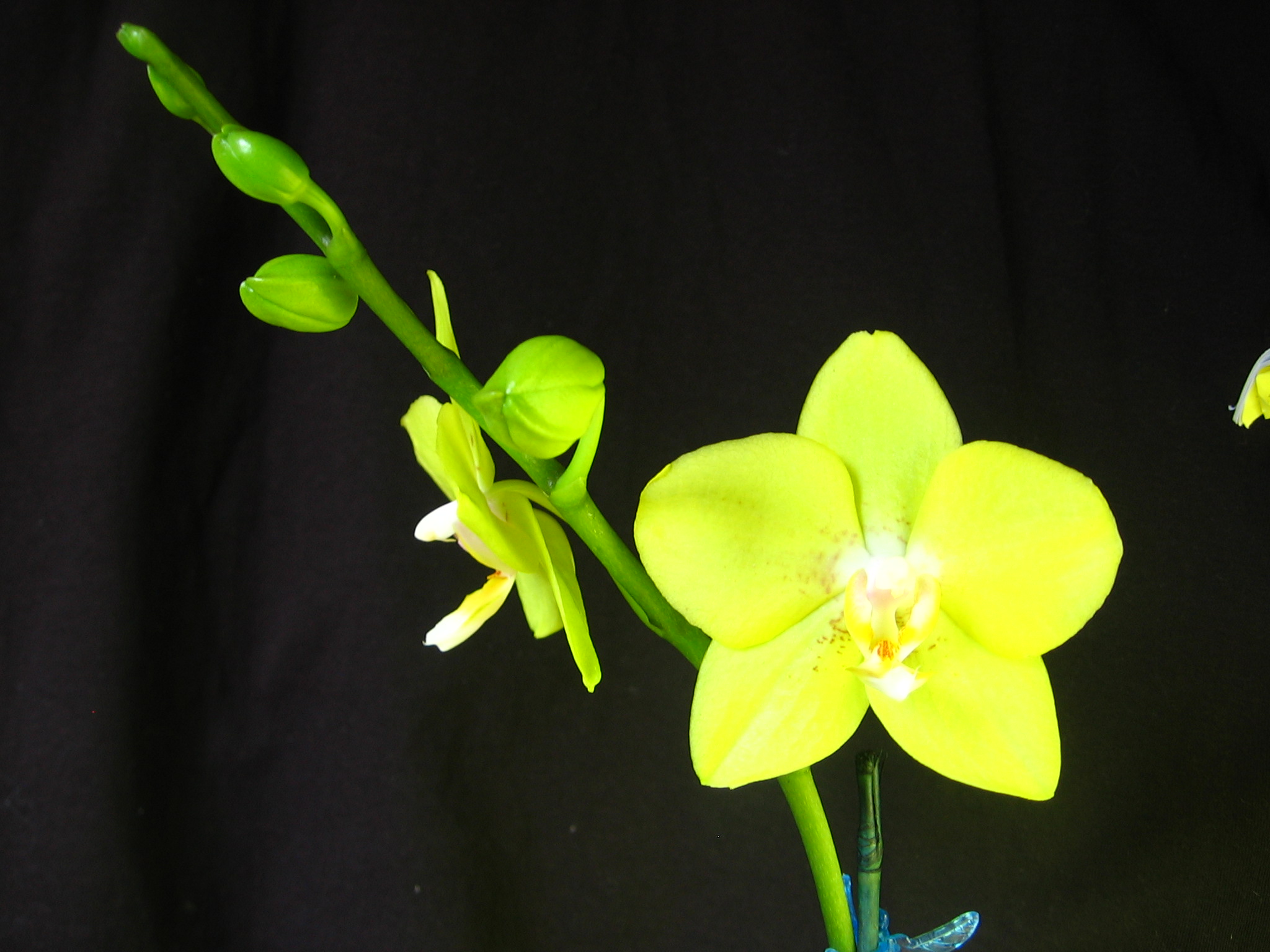
Sexual Reproduction:
Like other plants, the phalanopsis orchid exhibits alteration of
generations. The reproductive structures are housed in the column of the
flower. Pollination is done through insects. The bright colors and ornate
labellum of the Phalaenopsis sago lisa attract
pollinators. Certain orchids have developed close interaction with specific
pollinator base on the coloration patterns of the flower. The six pictures
below show step by step how orchids are pollinated. The green stick
represents the insect pollinator. First the pollinator lands on the labellum
of the flower. As the insects collects nectar, a adhesive pad that is
connected to the pollinia attaches the insect. The insect than flies off
with the pollinia to another flower. The pollinia is then “hooked” by the
column when the insect flies off. The pollen from the pollinia then comes
into contact with the stigmatic surface and is carried to the ovary where
fertilization occurs. Thousands of tiny seed are produced in the three
carpals of the ovary. Of the many seed dispersed into the wind few seeds
will survive to germination
Many orchid flower have developed close relationships
with distinct pollinator. For example the color pattern on the labellum may
resemble the mate of the pollinator. Other orchid labellums mimic the shape
of the pollinator’s mate.
Asexual reproduction:
Phalaenopsis orchids go through asexual reproduction in two way. One is by
self-pollination. This is the same process as sexual reproduction except it
is pollinated by pollen from itself, not another individual. Often the
seedlings from this plant are weaker and show more abnormalities. The other
means of asexual reproduction occurs when a plantlet or keiki begins to
sprout of the parent plant. This happens only on certain areas of the plant
and under certain conditions. These areas include the nodes on the spike, the roots and from the stem (below). Orchids are able to do this
because plant cell are totipotent, meaning a cell can differentiate into any
type of cell. Once the keiki has grown large enough it may fall off the
parent plant or be removed for cultivation.
This process of propagation is important to many growers.
Reproduction



